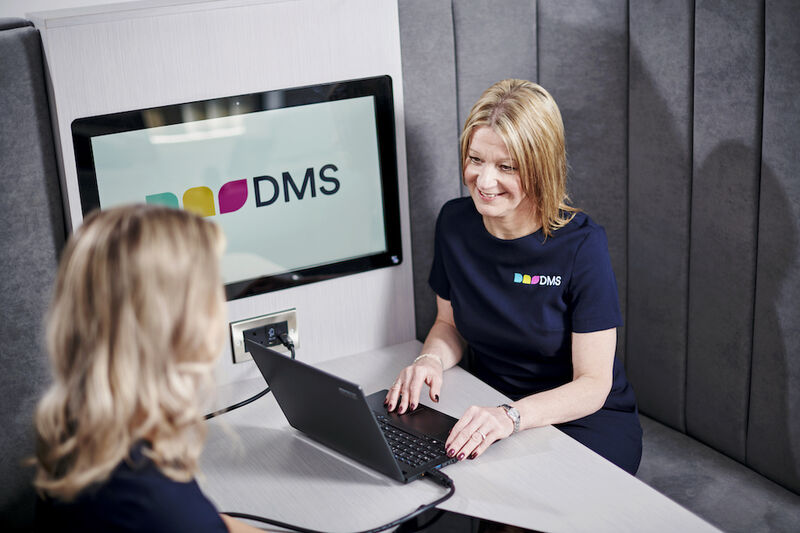Technology is more prevalent in classrooms than ever before, especially after the pandemic forced many schools to modernise with new ways of learning in order to adapt to the rules of lockdown.
Even prior to the pandemic, chalkboards were practically extinct, replaced with digital whiteboards for multimedia learning and new lessons were added to the curriculum to teach children modern skills such as coding.
But where can they go from here?
In this guide, we’ll be exploring what the future of classrooms look like and how DMS can help facilitate these advances in technology.
What Types of Digital Solutions Currently Exist in Schools?
Some examples of existing digital solutions in classrooms include:
Intranet & Communication Platforms
These digital platforms allow teachers, students and parents to communicate more quickly and easily, all in one place.
E-Learning and Course Management Platforms
These platforms provide teachers and students with a system to set and upload assignments and receive grades and reports. This also encourages students to meet deadlines as many platforms prevent assignments from being submitted after the deadline ends.
Cloud Storage
The cloud offers numerous benefits, such as improved efficiencies, greater data security and the ability to become more dynamic, flexible and paperless. This also helps to save on the costs of energy and resources.
Tablets
Now, more and more schools are using tablets within the classroom or providing each student with a tablet to use both in school for schoolwork and homework.
Interactive Displays
As we previously mentioned, many traditional chalkboards and whiteboards are being replaced by digital interactive displays to enable active and more engaging learning.
Why Do Schools Need Technology?
The purpose of school is to equip students with the knowledge, skills, competencies and tools they need for the future. As technology plays such a big part in our everyday lives, both at home and in the workplace, it is crucial that children are taught how to use and understand it.
Technology also enables different ways of teaching, accommodating different learning styles and therefore meeting the needs of more children and provides the opportunity for collaboration, teaching children how to work together as a team.
Memorising facts and regurgitating them in an exam is becoming redundant. Instead, technology encourages critical thinking- a key skill that students need to filter through information, critically analyse it and review its validity before coming to a conclusion on their findings.
What’s to Come for Future Classrooms?
There’s no definitive answer to this question as technology is constantly evolving, however, there are three key trends emerging for the near future.
Gamification
Games are children’s favourite form of entertainment as they provide a fun and immersive learning experience, while challenging skills such as creativity, critical thinking and problem solving– often with some healthy competition.
Gamification is the combination of learning and games, replacing traditional boring teaching with more fun and engaging ways to learn. For example, for younger students, gamification can be as simple as popping balloons that act as multiple choice answers to a question.
For older students, the use of streaks, daily goals and a finite number of lives motivates them to login every day to maintain their streaks, meet their daily goals and beat their previous high scores.
Gamification also fosters collaboration with ‘team missions’, encouraging students to work together to reach a common goal.
Adaptive Learning Plans
It is now widely recognised that people learn in different ways and at different rates. In the past, traditional learning styles had just one model that all students were made to learn by, helping some students advance while others were falling behind.
Fortunately, adaptive learning plans create a system that collects data and adapts learning plans for each student’s individual learning needs.
This ensures that all students are given equal opportunities to learn and develop their skills in a way that works for them.
In doing so, schools will be able to see a number of other benefits, including:
- Greater enthusiasm and engagement
- Higher quality learning experiences for each student
- Greater levels of mastery in different topics
In order to do this, a system is required that could handle significant amounts of data about students’ interaction with different learning materials.
This system would then use artificial intelligence (AI) to adapt the learning material on individual levels and provide teachers with feedback.
To carry out such a large scale project, the system would require a stable server and network, which can be challenging for schools with poor internet coverage.
AR & VR
Augmented reality and virtual reality gives schools and universities the opportunity to deliver more hands-on learning in the classroom. Simulation is already being used for pilot training and in clinical education settings to create authentic feeling scenarios without the risks or costs associated with real life situations.
This allows students to immerse themselves and learn how to perform tasks in more realistic scenarios– a skill they cannot gain from traditional learning styles.
AR helps to bring lessons to life, making them more engaging and improving retention rate. This is thanks to the way in which more senses are used to process information.
How Can DMS Facilitate the Implementation of Technology in Classrooms?
At DMS, we understand that schools and other educational institutions are constantly trying to keep up with the latest trends and technology to promote innovation, greater creativity and foster new skills within learning.
We also appreciate the pressure schools are under with such limited budgets due to stringent government cutbacks, making IT equipment funding more difficult than ever.
That’s why we offer tailored lease packages that meet all your school, college or university’s needs, helping you to spread the budget over a longer period of time whilst benefiting from the latest technology.
We take care of it all; IT consultancy, cloud services, audio/visual equipment, tablets & laptops, cyber security, software solutions and print management solutions.
For more information about how we can help to prepare your classroom for the future, get in touch with our team today.









